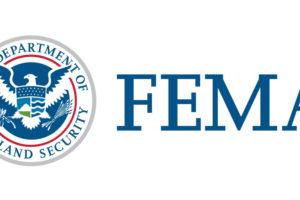The International Organization for Migration (IOM) and Oxfam have joined forces to launch an EU backed multi-million Euro Disaster Risk Reduction (DRR) project that will help hundreds of thousands of Internally Displaced Persons (IDPs) and other communities in Burundi.
Every year tens of thousands of people are displaced by natural disasters and climatic events, ranging from earthquakes, flooding, landslides, hail, and heavy and torrential rains that claim many lives and destroy thousands of homes. Over 112,000 people in Burundi are currently displaced due to such weather disasters.
This has negatively impacted Burundi’s efforts to reduce poverty, fight climate change, and build sustainable cities, in line with the Sustainable Development Goals.
The EUR 13 million, 3-year project—funded through “TUBEHONEZA,” the “Rural Development” component of the European Union’s Resilience Programme—includes nationwide risk mapping, building the capacity of the Government of Burundi to coordinate DRR initiatives and leading community-based DRR interventions.
IOM will focus on Burundi’s 18 provinces and 119 communes, while Oxfam will target 11 provinces and 22 communes. Though the scope of each organization’s work is slightly different, actions will be synergized and coordinated to complement each other, avoiding duplication and ensuring a joint approach throughout the country.
The project will be implemented in co-ordination with the Ministry of Home Affairs, Community Development and Public Security, particularly including the National Platform for Risk Prevention and Disaster Management of Burundi.
“Local communities suffer not only from the direct consequences of the events, such as through destruction of shelter, agricultural fields and displacement, but are also exposed to significant direct and indirect public health risks created by the disasters,” said AJ Morgen, IOM Burundi Chief of Mission. “Supporting DRR efforts in Burundi, therefore, is not only important but essential for reducing displacement and improving the conditions needed for long-term, sustainable development.”
The initial stage of the project entails a country-wide, multi-hazard assessment and risk mapping at the national level, to be scientifically tailored to meet five primary hazards: torrential rains, strong winds, flooding, landsides, and earthquakes. The data collected during the risk assessment will produce risk assessment maps for each of the five hazards.
The second stage will utilize the risk maps to update or elaborate contingency plans in all 18 provinces of Burundi. Combined with institutional capacity building of the country’s Disaster Risk Management (DRM) platforms, this will enable communities, local authorities, humanitarian and development organizations to better prepare for, and respond to, those risks.
The final component of the project will engage communities most at-risk of disasters to implement disaster prevention and mitigation activities.
The projects also include emergency response funding to enable IOM and Oxfam to provide emergency non-food items and/or shelter support if a significant disaster occurs during the project’s lifetime.
“Climate change is severely affecting the Burundian population and will increase the frequency and magnitude of natural disasters in the future. The EU has reacted and is now supporting efforts to prevent these disasters. The EU will remain alongside the Burundian people and will draw on the experience of IOM and Oxfam in dealing with these risks,” explained H.E Claude Bochu, Ambassador of the European Union to Burundi.


